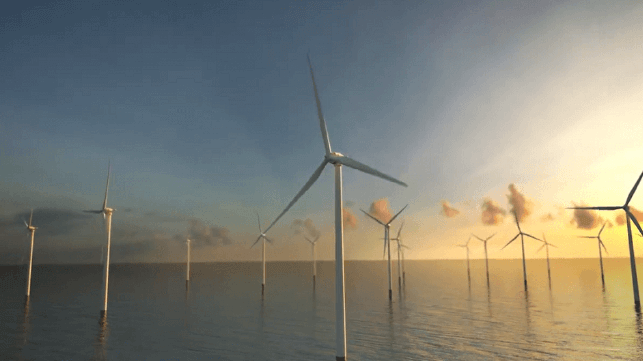Australians will bear yetanother blowto our cost of living in July when electricity prices will surge up to 18percent, which amounts to over $180per yearin some cases.
This is partly due to geopolitical tensions driving up the cost of generating electricity from coal and gas – costs that are increasingly volatile – leading theAustralian Energy Regulatorto increase its so-called “default market offers” for electricity retailers in New South Wales, South Australia and Queensland.
If the Albanese government ever needed another reason to turbocharge its efforts on renewable energy and storage, this is it.
Investing in renewables, energy storage, electric vehicles and other clean industries will not only lower power prices, but will also lower emissions, increase our self-sufficiency, create new jobs, and protect us from international price shocks like we’re seeing now.
Fortunately, the Albanese government has a strong mandate for game-changingclimate actionthis decade. The government aims for renewable energy to make upover 80% ofAustralia’s electricity mix by 2030, but its pledge of $20 billion for new transmission infrastructure means we can aim higher and go faster.
Holding us back, however, is continued investment in the coal industry. Indeed, doubling down on fossil fuels right now would be extraordinarily reckless from a security perspective – as the United Nations climate envoypointed outthis month, “no one owns the wind or the sun”.
So how can Australia transform into a renewable energy powerhouse? Here are three important ways the Albanese government can meet its ambition swiftly and justly.
Labor’s goal is for renewables to make up 80% of the national grid.AAP /Lukas Coch
1. Energy justice with community energy
Communities must be placed at the heart of the energy transition if we’re to seeenergy justicein Australia. Energy justice is whenall members of societyare granted access to clean energy, particularly disadvantaged communities such as those without housing security.
One way to make this happen is with community-owned renewable energy and storage, such as wind energy co-operatives. For example, theHepburn Wind Co-operativeis a 4.1 megawatt wind farm owned by more than 2,000 community shareholders. Another example is community-owned social enterprise electricity retailers such asEnova, which has more than 1,600 community shareholders.
Labor has made a great start. ItsPowering Australiaplan pledges to install 400 community batteries and develop shared solar banks to give renters, people in apartments, and people who can’t afford upfront installation costs access to solar energy.
The next step should be a rapid roll out of a federal community solar scheme, similar to a program in the United States. TheUS Community Solar schemeis backed by legislation to create a third-party market for communities. It allows communities to own solar panels or a portion of a solar project, or to buy renewable energy with a subscription.
This means lower socio-economic households can benefit from clean, reliable and cheaper electricity from solar when they’re not able to put panels on their rooftop.
Australia needs a dedicated national policy or government body that builds on the work of other bodies, such as theCoalition for Community Energy, to govern community-based energy and enshrine the principles of energy justice.
2. Rapid uptake of offshore wind
Offshore wind farms represent a key opportunity for Australia’s decarbonisation – the combined capacity of all proposed offshore wind projectswould be greaterthan all Australia’s coal-fired power plants.
But Australia’s offshore wind industry is only in its infancy. And while Labor’s Powering Australia plan targets manufacturingwind turbine components, it lacks policy ambition for offshore wind.
Renewable Energy Zones(a bit like the renewables equivalent of a power station) are currently being rolled out Australia wide. These should encompass offshore wind zones to encourage the rapid uptake of this vast energy source.
For example, in February, the Renewable Energy Zone in theHunter-Central Coastregion had seven offshore wind proposals and attracted over $70 billion in investment. Potential renewable energy projects in this region represent over 100,000 gigawatt hours of energy – the same as the annual output often coal-fired power stations.
The federal government should also set an offshore wind target to accelerate uptake. Victoria, for instance, recently announceda targetof 2 gigawatts installed by 2032, 4 gigawatts by 2035, and 9 gigawatts by 2040.
Similarly, the United Kingdom recently increased its offshore wind target to50 gigawattsby 2030 – the equivalent to poweringevery household in the nation, according to the UK government.
Despite its potential, Australia only introducedfederal legislative frameworkfor offshore wind last year – and it needs work. For example, the legislation doesn’t incorporatemarine spatial planning, which is a process of coordinating sectors that rely on the ocean, such as marine conservation, the fishing industry, and the government.
3. Just transitions for coal communities
The Australian Energy Market Operatorsaysthe National Electricity Market could be 100 percentpowered by renewables by 2025. Further closures of aging and unreliable coal-fired power stations are inevitable.
The government must not leave carbon-intensive regionsbehindin the transition to new clean industries. If we do this right, generations of Australians could be working in renewable energy, clean manufacturing, renewable hydrogen, and the extraction of critical minerals.
Creating a national coal commission could help produce a roadmap away from fossil fuels, and seize on the opportunity tocreate clean jobs. This is being donein Germany, where a government-appointed coal commission consulted unions, coal regions, local communities and more to develop a pathway to transition the coal industry by 2038.
We can also see this inCanada, which is developing legislation with principles of a just transition by establishing a body to provide advice on strategies supporting workers and communities.





